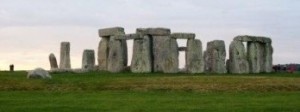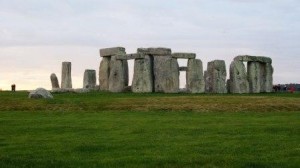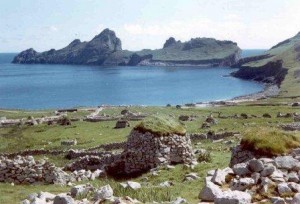
The UK is home to close to thirty official World Heritage Sites as recognised by UNESCO (United Nations Educational, Scientific & Cultural Organisation). These are recognised as unique sites that have and continue to make an outstanding contribution to world heritage and culture. In essence the sites are deemed to offer something unique to the people's of the world that transcends national and geographical boundaries.
What Are World Heritage Sites
World Heritage Sites (WHS) are unique places and sites that are deemed to have international importance and significance. The sites are seen as vitally important for the conversation of cultural and national heritage worldwide. In total there are currently just under 1,000 recognised sites and places, the UK and the associated overseas territories are home to 28 of the sites. London is home to several of the sites including well known historic sites such as the Tower of London and Westminster Abbey among others, there are WHS located across the length and breath of the UK.
Some of the best known sites are of great historical, cultural and international importance in addition to being among the worlds most visited and favourite tourist attractions. Well known sites include the Acropolis in Greece, the Great Wall of China in China, the Great Barrier Reef in Australia, the Pyramids in Egypt, the Taj Mahal in India and Venice in Italy with many more.
The sites on the list are deemed places that need to be preserved for future generations with conservation a high priority. The sites are regarded as important in preserving a common and universal heritage for mankind.
The World Heritage Convention was established by UNESCO in 1972 and a World Heritage List set up. The list contains a wide array of sites located across the world. On the list are several natural sites and a range of cultural sites that include historic monuments, buildings, towns and landscapes among others. All the sites on the list are deemed to offer outstanding universal value thus are regarded as making a unique contribution to heritage and culture.
The World Heritage Convention aims to preserve and protect the natural and cultural sites. Some of the sites have been subject to a lack of funding and maintenance allowing them to deteriorate or face the prospect of disappearing altogether. The states that are parties to the convention contribute financial and other resources and expertise to help protect the sites on the list.
The list contains a range of sites, some of which are instantly recognisable there are also other sites on the list that are much less recognisable with there being much debate and discussion among commentators as to the merits or otherwise of particular sites being on the list.
Site Nomination Process
In order for a site, property or place to become a WHS, it needs to be nominated by the government of the country it is located in. Sites need to be nominated by governments to the World Heritage Committee.
The World Heritage Committee is an intergovernmental committee that was set up at the World Heritage Convention. There are two international bodies that carry out an assessment to help determine whether or not a site should be accepted or not, the ICOMOS (International Council on Monuments and Sites) for cultural sites and IUCN (International Union for Conservation of Nature) for natural sites. The Committee then decides whether the bid to be included in the list if successful or not.
To be considered for being included in the WHS list, the sites must be deemed to offer values that are both outstanding and universal. There are sites that qualify for inclusion in certain aspects but not in others and thus miss out on inclusion to the list.
List Of UK Sites
The UK and the associated Territories is host to 28 WHS as are shown below:
1986
Castles and Town Walls of King Edward in Gwynedd
Durham Castle and Cathedral
Giant's Causeway and Causeway Coast
Ironbridge Gorge
St. Kilda
Stonehenge, Avebury and Associated Sites
Studley Royal Park, including the Ruins of Fountains Abbey
1987
Blenheim Palace
City of Bath
Frontiers of the Roman Empire (Hadrian's Wall)
Westminster Palace, Westminster Abbey, and Saint Margaret's Church
1988
Canterbury Cathedral, St. Augustine's Abbey and St. Martin's Church
Henderson Island
Tower of London
1995
Gough and Inaccessible Islands (Gough Island Wildlife Reserve)
Old and New Towns of Edinburgh
1997
Maritime Greenwich
1999
Heart of Neolithic Orkney
2000
Blaenavon Industrial Landscape
Historic Town of St George & Related Fortifications, Bermuda
2001
Derwent Valley Mills
Dorset and East Devon Coast
New Lanark
Saltaire
2003
Royal Botanic Gardens, Kew
2004
Liverpool – Maritime Mercantile City
2006
Cornwall and West Devon Mining Landscape
2009
Pontcysyllte Aqueduct and Canal
There have been a number of possible future sites that have been identified as being potential sites on the WHS list, these include:
- Chatham Naval Dockyard, Kent, England
- Creswell Crags, Nottinghamshire/Derbyshire, England
- Darwin’s Landscape Laboratory, Kent, England
- Lake District, Cumbria, England
- Jodrell Bank Observatory, Cheshire, England
- Twin Monastery of Wearmouth-Jarrow, Sunderland and South Tyneside, England
- Slate Industry, North Wales
- Mousa, Old Scatness & Jarlshof, Shetland, Scotland
- The Flow Country, Scotland
- The Forth Bridge (Rail), Scotland
Contact Details
The Department for Culture, Media and Sport
2 - 4 Cockspur Street
London
SW1Y 5DH
Telephone: +44 (0)20 7211 6200
Website: UK World Heritage Sites
Map
View UK World Heritage Sites in a larger map
For Local Search and Directions see: UK World Heritage Sites Map
Implications & Rewards For A Site
For a site that gains a place on the official WHO list from UNESCO there can be a number of implications to consider.
WHO status brings with it a higher level of International Recognition and Accountability. It has been argued there is an increase in the prestige of the site and the way it is perceived by both visitors and organisations. With the extra recognition there are usually more visitors attracted to seeing the site meaning there needs to be high standards for looking after visitors along with looking after and conservation of the actual site itself.
The international recognition and exposure can bring benefits such as a greatly increased profile for the site and area and extra income from new visitors to the sites. There can be a knock on effect boosting the local area, other local attractions and the local economy.
WHO recognition can act as a catalyst for regeneration and redevelopment projects, along with an international profile and publicity. It has be argued the city of Liverpool – Maritime Mercantile City benefited from being on the list helping in its profile, increasing the projects for regeneration of the city combined with its title as European Capital of Culture for 2008.
There can be improved site protection and management, this is the responsibility of the national government, alongside local authorities and others responsible for the sites protection and upkeep. UNESCO recommended management plans aimed at helping to ensure the preservation of the site along with outlining a decision making framework. The plans include long term aims and possible opportunities. Governments are required to report to UNESCO on the conservation status of the sites in their control at regular intervals.
The stakeholders in the various sites are encouraged to come together with a common aim to ensure the sites are preserved and run effectively in a sustainable way. This brings together many organisations both local and national and can mean an increase in partnerships and co operation.
Disclaimer: The information given in on this website is given in good faith and to the best of our knowledge. If there are any discrepancies in no way do we intend to mislead. Important travel details and arrangements should be confirmed and verified with the relevant authorities.




